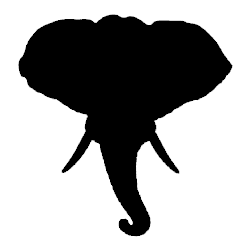SOUTH AFRICA
South Africa should be requested to develop a NIAP, particularly due to the role of organised wildlife trafficking criminal syndicates, an increase in processing of ivory in the country and increased poaching.



Is there a need to revise the existing NIAP or develop a new one? ‘YES‘

BEST PRACTICE
In 2014, it was reported that a successful prosecution had resulted in the highest penalty ever imposed in South Africa for the illegal possession of ivory: 10 years’ imprisonment and a R5 million fine for a convicted Chinese national, which represents a real deterrent.
The Government has developed a comprehensive National Integrated Strategy to Combat Wildlife Trafficking (NISCWT). If fully implemented, the NISCWT will address many of the issues faced by South Africa.
In 2018, the Government allocated an additional amount of R104 million for combating wildlife crime. Relevant Government agencies cooperate in the fight against wildlife trafficking through a coordination mechanism. Law enforcement officials receive training and awareness-raising, with assistance from NGOs.
KEY CONCERNS
Increased level of poaching
In its 2016 report on the status of African elephant populations, the IUCN noted that there had been an increase in the level of poaching in South Africa, in particular a rise in Kruger National Park. The report to CoP17 on Monitoring the Illegal Killing of Elephants (MIKE) also noted with concern that there had been a substantial increase in the level of illegally killed elephants in the Kruger, which had been one of the most secure sites for elephants in Africa. The MIKE report in 2018 also highlights an increase in poaching in Kruger where the number of illegally killed elephants increased from 46 in 2016 to 67 in 2017.
Ivory processing operations
The ETIS report to CoP17 also notes “increasing evidence of direct Chinese involvement in Africa-based ivory processing operations in many countries” in South Africa and other African countries. Worked ivory products such as bangles, name seals and chopsticks are being produced and shipped to Asia using courier companies as well as individuals who sometimes carry contraband on their person.
Lack of reporting to facilitate CITES decision-making
In the ETIS analysis for CoP16, South Africa was regarded as a Party of Primary Concern but changed to Secondary Concern in the ETIS report to CoP17 because it had not been implicated in any large-scale ivory seizures since 2012. However, the report to CoP17 also noted that South Africa has a very poor record of submitting seizure data to ETIS in recent years. South Africa’s status as a Party of Secondary Concern is clouded by its failure to share information transparently on ivory trade from and through the country.
Limited enforcement effectiveness
Despite the welcome example of the 2014 penalty mentioned above, the prosecution rate for wildlife crime in South Africa is very low, due in part to inadequate law enforcement.
Vietnamese criminal syndicates operating in South Africa
The ETIS report to CoP17 noted an increasing concern at the number of Vietnamese nationals being apprehended in, or coming from, Africa with ivory, some of whom appear to be organised by criminal syndicates operating in South Africa as well as Angola, Mozambique and Togo. EIA investigations also confirm that Vietnamese syndicates based in South Africa are involved in smuggling ivory and rhino horn from Africa to Asian markets.
Corruption
Corruption is an obstacle to effective enforcement relating to wildlife crime. For instance, 11 policemen were arrested in 2015 in relation to trading in rhino horn. While various anti-corruption bodies exist, according to a report published by the Global Initiative in 2016, there is no effective anti-corruption strategy within the police and the Department of Environmental Affairs also lacks a specific anti-corruption programme. The Global Initiative report also states that corruption is a serious problem in Kruger National Park, where two rangers were arrested in relation to rhino poaching in June 2016, and in certain provincial conservation offices, including KwaZulu Natal.
Provincial autonomy leads to inconsistent law enforcement
The National Environmental Management: Biodiversity Act 2004 (NEMBA) provides the broad framework for wildlife protection in South Africa but each of the country’s nine provinces has autonomy to implement the national law with their own legislation. According to a 2016 study, substantial differences exist between provincial wildlife laws thereby creating numerous loopholes that undermine effective law enforcement. Significant discrepancies also exist in the prosecutorial capacity of different provinces.
RECOMMENDATIONS FOR NIAP REVISION / PRIORITY AREAS OF IMPLEMENTATION:
- Implement the National Integrated Strategy to Combat Wildlife Trafficking
- Conduct effective enforcement in relation to the networks operating in Kruger National Park and take pre-emptive action to prevent an escalation in poaching
- Ensure timely and complete reporting on elephant poaching and ivory trade
- Train investigators, prosecutors and the judiciary in wildlife-specific offences to ensure more prosecutions, convictions and deterrent sentences
- Strengthen regional and international collaboration with relevant African countries and key transit and destination countries such as Vietnam
- Strengthen enforcement to target ivory processing operations in South Africa
- Develop and implement an effective anti-corruption strategy
- Apply the ICCWC Toolkit
- Ensure consistent legislation and law enforcement across the provinces
Key indicators of NIAP progress
